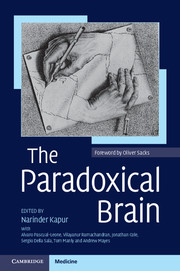Damage to any part of the body, if severe enough, can cause a corresponding loss of function: cardiac failure, liver failure, renal failure, etc. That this could also occur with specific areas of the brain was supported, in the 1860s, by Broca's demonstration that damage to a particular area of the left frontal lobe led to expressive aphasia – an indication, he felt, that this area constituted a ‘centre’ for speech. Classical neurology was founded on this deficit/lesion model, and the clinico-pathological method remains the foundation of neurology today. Indeed, in the last few decades, it has flourished, with the added power of brain imaging, which makes it possible to visualize brain lesions and their effects in living patients.
But there have been dissenting voices from the start – in particular, that of Hughlings Jackson, who also studied aphasic patients, but came to think that Broca's view of aphasia – as no more than a loss of function – was inadequate. The loss of speech, Hughlings Jackson emphasized, was never the sole symptom in aphasia; there were always ‘positive’ ones as well, which were unmasked or released as a consequence of the lesion; one of his papers, for example, was entitled ‘Singing by Speechless (Aphasic) Children’ (Jackson, 1871). In his 1884 Croonian Lectures on ‘Evolution and Dissolution of the Nervous System’, Jackson wrote, ‘The symptomatology of nervous diseases is a double condition; there is a negative and there is a positive element in every case’ (1884, p. 591).




